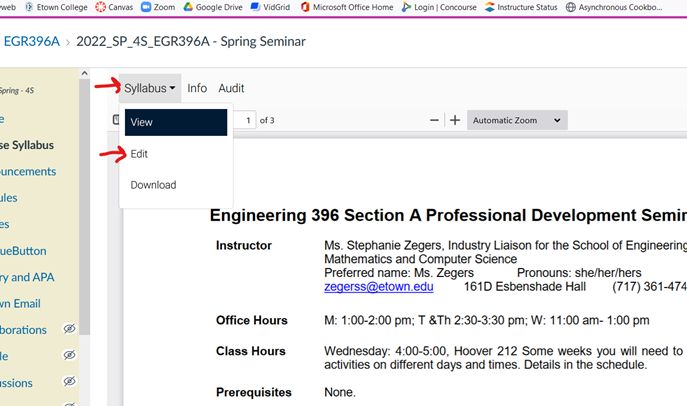Dr. Katie Caprino, Assistant Professor of Education and Teaching & Learning Design Fellow
You can contact Dr. Caprino at caprinok@etown.edu.
Honestly, I had not heard of design thinking before I arrived at Elizabethtown College. I was introduced to the idea at a design challenge workshop during one of my first few years at the College. I must admit my team did not have the “winning” design, but the experience led me to think about design thinking and incorporate it into my work in a multitude of ways. I introduced the concept in my creativity methods course and did a SCARP project in which a student researcher and I thought about how design thinking functioned in contemporary picture books.
But as I was completing my instructional coaching endorsement, I began to find connections between design thinking and coaching. I shared my ideas with a literacy colleague Dr. Christine Walsh at Slippery Rock University, and we had some intriguing conversations. In this blog post, I’ll share the results of these conversations and ways design thinking elements can help us as we think about a culture of coaching at Elizabethtown College.
Empathize. When designing, empathy is the starting point. Knowing the users for whom you are creating is key. The same is true with coaching. As we think about engaging in coaching relationships, we must build relationships with those we coach and those who coach us. Have a cup of coffee. Take a walk. Chat about your work at the College but also about yourselves as humans. Share hobbies, interests, and favorite restaurants. These relationships are central to coaching partnerships, which may flip (i.e., the coachee may become a coach in another cycle), and are a key component of what makes our campus community special.
Define. A problem-solving framework, design thinking looks to define the problem. We can think more broadly about this in terms of coaching on our campus. We can certainly work with our coach or coachee to articulate an area of growth in a myriad areas (e.g., advising, teaching, scholarship, conference presentations, work-life understandings, etc.), but we can also think about how to help one another intensify a strength or more deeply engage with an area of strength. Sometimes this is an area that is identifiable right from the beginning of the coaching cycle; other times an observation of teaching practice or analysis of other artifacts (e.g., conference proposals) may be helpful.
Ideate. This is the brainstorming component of design thinking. In this step, many ideas are thrown out and tossed around. This is The Sticky Note Part. The coach may bring in resources (e.g., teaching articles, videos, or book chapters; sample conference proposals; or a list of a few strategies). Time is then spent discussing the ideas and an area of focus is decided upon. It is important not to overwhelm the coachee with too many ideas. A narrow focus is key here.
Prototype. This is where the models are created and analyzed in design thinking. When applying this step of design thinking to coaching, you can think about coming up with the plan for addressing the narrow focus from the last step. Here, you may plan for how the coachee will implement one of the agreed-upon strategies in their classroom. Sometimes, the coach may come to the coachee’s classroom and demonstrate a lesson strategy. If a coachee is receiving assistance on submitting to conferences, here is where the draft of the proposal may be composed and reviewed.
Test. This is where the test drive happens. The coachee may teach the lesson with the new strategy or submit a conference proposal for the first time. This is the step where all of the defining, ideating, and prototyping pays off.
Will it always be perfect? Of course not! Design thinking and coaching are recursive practices. Although demonstrated here in a linear process, there may be some messiness. You will, for example, focus on empathy throughout – not just at the beginning. And you may have to return to the defining stage as you move throughout your coaching-coachee relationship. And that is okay. You’re designing!
Stay tuned for the next post in the Culture of Coaching Blog Series: Questions to Post When Coaching.
A special thank you to my literacy colleague Dr. Christine Walsh at Slippery Rock University for engaging in meaningful conversations and writing with me about the connections between design thinking and coaching.


